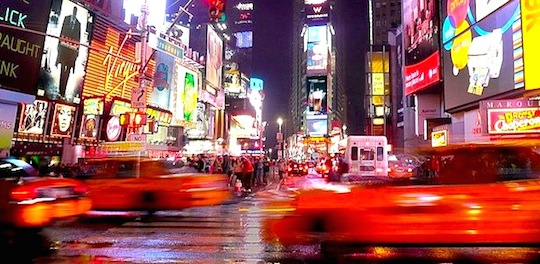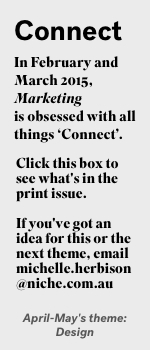Are you one of the marketers suffering from Neon Light Syndrome?
Share

 Doctor Karl (Treacher; not a real doctor) is here to diagnose the backwards marketers of Australia with ‘Neon Light Syndrome’ – and hopefully provide the remedy.
Doctor Karl (Treacher; not a real doctor) is here to diagnose the backwards marketers of Australia with ‘Neon Light Syndrome’ – and hopefully provide the remedy.
The editor of this magazine called me at 2.17pm on a Wednesday to inform me of a few interesting changes to the magazine and to share this issue’s theme, ‘Connect’. Now, this particular Wednesday wasn’t your everyday kind of Wednesday, but a Wednesday that had already been going for 10 hours and promised another 10 (if I ate an apple for dinner at my desk and brushed my teeth in the car). Aside from those fascinating details, the fact that the editor chose the telephone as his communication channel as a means to influence my column topic provides a perfect example of connecting appropriately.
His objective was to share information and align my efforts behind this theme. We spoke, I agreed and here we are. However, if he had called his agency, then there is a fair chance I would have learned of this request via a 30-second TVC or via a display ad on Facebook. Luckily, he doesn’t have an agency, so I didn’t have to turn on the TV or ignore yet another Facebook campaign.
What is ‘Neon Light Syndrome’?
Neon Light Syndrome is defined (a definition I just made up) as ‘the illogical propensity for Australian marketers to communicate via traditional media (eg. TVC, outdoor etc) for purposes other than brand awareness’.
Let me explain in story form. Earlier today (around 5am), driving to the office, I deviated from my intuitive behaviours and read a number of billboards promoting products and services. It occurred to me that the consumer insight behind the vast majority of these ads must have been ‘people like rhymes and puns’. I’d share some examples, but I honestly can’t remember them. That said, in every case I wasn’t introduced to anything new. Old brands screaming simple awareness messages. There are much more cost-effective and result-oriented solutions for this type of marketing activity.
How did Neon Light Syndrome start?
Neon Light Syndrome is a hangover from the glory days of advertising when the mission for all brands was make as many people as possible aware of a new product or service, along with its features and benefits. The best way to do that at that time was that new-fandangled gizmo called ‘the television’. Since then, a little thing called ‘the internet’ has shown up and rained hellfire on the traditional media picnic… or so you would have thought.
What are the symptoms and risks of Neon Light Syndrome?
Until recently, marketers with Neon Light Syndrome could continue on their merry way of shouting instead of connecting. ROI was difficult to assess and the brand and marketing capability of the C-suite wasn’t sophisticated enough to know good value from bad. Those days are numbered. The days of being awarded (literally) without any correlation to business performance will come to an end due to advances in behavioural analytics and big data. Even now, if CEOs understood brands and the current media landscape there’d be a pile of CMOs 10 deep at the tip.
Is there an antidote?
Marketing in 2015 is also about making your brand relevant where your customers find you. Sounds easy, right? Well, the gush of reports throughout 2014 detailing social media fatigue and digital privacy concerns suggests otherwise. It also indicates brand confusion when it comes to driving brand relevant content. According to qualitative research, one of the most common reasons for the trend away from the dominant social media platform was the perceived preferencing of brands’ content over friends’ content and that content being undesirable. Read: irrelevant in the customer’s context.
A recent Forrester report, ‘Social Relationship Strategies That Work,’ found that the average Facebook post from a large brand will reach just two percent of its followers and that less than 0.1 percent will engage.
Do we all die in the end like on Game of Thrones?
With a two percent Facebook penetration rate, some could argue this is game changing and possibly apocalyptic. However, when you dig a little, it has more to do with content than channel. When the social media gurus started hypnotising us all by selling Facebook, the strategic idea was to be where your customers are and provide them with something entertaining and useful. ‘Entertaining’ alone is just awareness and preference work, ‘useful’ is relevance. The strategic idea was
to use these channels to forge the one-to-one connection marketers have been lusting after for so long. In the same report, Forrester found that when people want to connect with their favourite brands they’re almost three times more likely to go to the brand’s website than to their Facebook page.
The wrap
Some brands have understood the lessons and the data and made themselves ready to operate in the space as platform agnostic. These brands are now using the dominant players for awareness, preference and branded community building, in line with Forrester’s prediction for Facebook to become “nothing but a repository for display ads”.
Other brands are taking some of their traditional neon tubes down and spending the power savings on ‘digital neon’. And their agencies are delighted.
Facebook was once an answer, not the answer. The question is the same for every brand: ‘how do we connect?’
The answer, however, is unique to each brand, but has to involve three things:
- meet me at the right time psychologically
- speak to me in the right tone of voice, and
- demonstrate quickly how you will make my life better, easier and/or more rewarding.
The question has always been: how do we connect?
Image credit: The cabs of Times Square by joiseyshowaa via Flickr used under CC BY-SA 2.0















